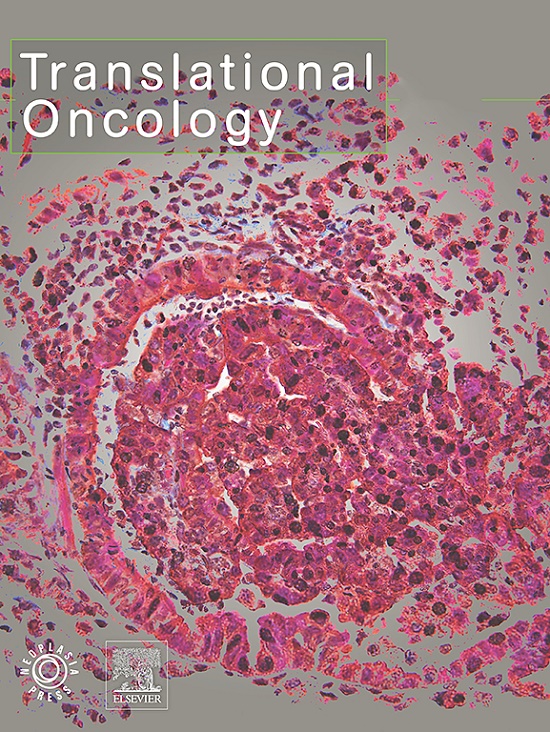MYST2 组蛋白乙酰转移酶通过调节 p38 MAPK 信号通路促进肺腺癌的进展
IF 5
2区 医学
Q2 Medicine
引用次数: 0
摘要
背景肺癌,尤其是肺腺癌,因其发病率和死亡率高而对健康构成了重大挑战。尽管靶向治疗取得了进展,但肺腺癌的治疗效果仍不令人满意。本研究探讨了组蛋白乙酰转移酶MYST2在肺腺癌中的作用及其作为治疗靶点的潜力。方法利用TIMER 2.0和TCGA数据库进行分析,比较肺腺癌组织和正常组织中MYST2的表达水平。进行了包括细胞增殖、迁移和侵袭在内的功能测试,以评估肺癌细胞中MYST2过表达和基因敲除的影响。结果分析表明,与正常组织相比,MYST2在肺腺癌组织中显著上调,并且与不良预后有关。功能试验表明,MYST2 过表达促进肺癌细胞增殖、迁移和侵袭,而 MYST2 基因敲除则抑制肺癌细胞增殖、迁移和侵袭。从机理上讲,MYST2 可增强 p38 和 ERK 的磷酸化。免疫共沉淀和 GST 下拉实验确定了 MYST2 的 MYST 结构域是其与 p38 相互作用的关键。此外,MYST2 的过表达促进了 MEK6 与 p38 的结合,间接影响了 p38 的活性。本文章由计算机程序翻译,如有差异,请以英文原文为准。
MYST2 histone acetyltransferase promotes lung adenocarcinoma progression by regulating the p38 MAPK signaling pathway
Background
Lung cancer, particularly lung adenocarcinoma, poses a significant health challenge due to its high incidence and mortality rates. Despite advancements in targeted therapies, treatment outcomes for lung adenocarcinoma remain unsatisfactory. This study explores the role of the histone acetyltransferase MYST2 in lung adenocarcinoma and its potential as a therapeutic target.
Methods
An analysis using the TIMER 2.0 and TCGA databases was performed to compare the expression levels of MYST2 between lung adenocarcinoma tissues and normal tissues. Functional assays, including cell proliferation, migration, and invasion, were conducted to evaluate the effects of MYST2 overexpression and knockout in lung cancer cells. Co-immunoprecipitation and GST pull-down assays were utilized to identify interactions involving the MYST domain of MYST2 and p38, while also assessing the impact of MYST2 on the binding between MEK6 and p38.
Results
The analysis revealed that MYST2 was significantly up-regulated in lung adenocarcinoma tissues compared to normal tissues and was associated with poor prognosis. Functional assays demonstrated that MYST2 overexpression promoted, whereas MYST2 knockout inhibited, lung cancer cell proliferation, migration, and invasion. Mechanistically, MYST2 enhanced the phosphorylation of p38 and ERK. Co-immunoprecipitation and GST pull-down assays identified the MYST domain of MYST2 as crucial for its interaction with p38. Additionally, MYST2 overexpression facilitated the binding of MEK6 to p38, indirectly influencing p38 activity.
Conclusion
These findings suggest that MYST2 acts as an oncogene in lung cancer by modulating p38 phosphorylation through the MYST domain, underscoring its potential as a prognostic marker and therapeutic target.
求助全文
通过发布文献求助,成功后即可免费获取论文全文。
去求助
来源期刊

Translational Oncology
ONCOLOGY-
CiteScore
8.40
自引率
2.00%
发文量
314
审稿时长
54 days
期刊介绍:
Translational Oncology publishes the results of novel research investigations which bridge the laboratory and clinical settings including risk assessment, cellular and molecular characterization, prevention, detection, diagnosis and treatment of human cancers with the overall goal of improving the clinical care of oncology patients. Translational Oncology will publish laboratory studies of novel therapeutic interventions as well as clinical trials which evaluate new treatment paradigms for cancer. Peer reviewed manuscript types include Original Reports, Reviews and Editorials.
 求助内容:
求助内容: 应助结果提醒方式:
应助结果提醒方式:


